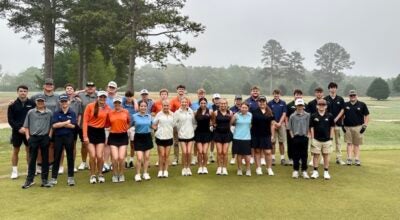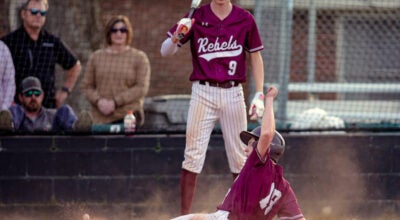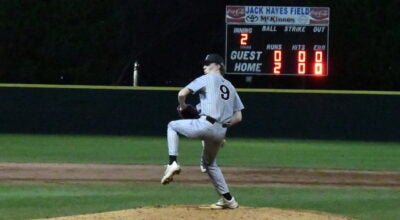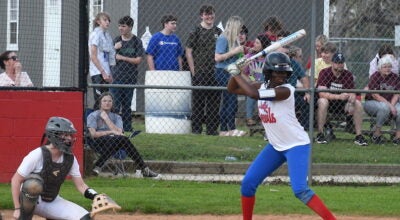Checkered future for NASCAR as economy downshifts
Published 2:35 pm Thursday, October 16, 2008
CHARLOTTE, N.C. – The phone rang off the hook at Hendrick Motorsports in June 2007 as prospective sponsors lined up to spend their money on Dale Earnhardt Jr., NASCAR’s most popular driver who had just signed a five-year contract with the team.
“We want in, and we know it’s going to be expensive,” was the message Hendrick heard over and over. Mountain Dew’s AMP Energy and the Army National Guard ultimately teamed to pay the tab, estimated to be at least $30 million annually.
A mere 15 months later, the calls from sponsors aren’t coming in as regularly to shops all across NASCAR. The weakening economy has made funding difficult to come by, and the financial meltdown has put once-solid teams on perilous ground.
“It’s a scary time right now,” said driver Jeff Gordon. “We see strong teams struggling to get sponsorship.”
Two-time champion Tony Stewart learned just how scary when he decided in June to leave Joe Gibbs Racing’s successful three-car operation to run his own team.
Stewart pulled in split sponsorship from Old Spice and Office Depot for his car, but he had to work to find funding for teammate Ryan Newman. He announced last week the U.S. Army signed a one-year deal to sponsor 23 races next season for Newman — winner of the Daytona 500 — but he still has 13 races to sell.
“I feel like with the economy the way it is right now, we’re right in line with where we need to be,” Stewart said. “It’s more important to take the extra time and get the right people than to just get people.”
As companies tighten their belts or even fail, sponsorship money that once flowed freely to all sports teams and leagues is in danger of drying up. And it’s auto racing that could suffer the most, said Craig Depken, an economics professor at UNC-Charlotte who specializes in sports.
“It’s primarily driven by the sponsors,” Depken said, “and not just NASCAR. It’s just about every motor sport there is.”
With sinking auto showroom sales, declining attendance and rising operating costs, no form of motorsports is safe — not even the glamorous, globe-trotting Formula One Series. The Canadian Grand Prix was dropped from the 2009 schedule, leaving no races in North America, and Max Mosley, head of F1’s governing body, warned that the whole series could be in peril if drastic cost reductions are not made within two years.
The soft economy already is affecting several teams in NASCAR, which is built around independent car owners who rely heavily on sponsorship to pay the bills. A collapsing economy could destroy it.
Operating costs are at an all-time high, and NASCAR’s current business model calls for sponsorship dollars to make up at least 75 percent of its budget.
A decade ago, a top-name sponsor spent about $4.5 million. Today, it varies between $25 million — what Aflac Insurance reportedly will pay for sponsoring Carl Edwards next season — and the $30 million-plus that’s on Earnhardt’s car.
Not every car has the same kind of sponsorship deal. Some sponsors pay for “tip to tail” space on cars and have full control over which other companies are on the quarter-panels — the area above the rear tires — and on the fenders and decklid. Other sponsors sign away that right to the car owner, who can then sell those spots to other advertisers. Aflac, for example, wants to sell a handful of races next season to an “associate sponsor” to recoup some costs.
The top teams try to raise $20 million per car: at least $15 million a year from a primary sponsor and $5 million in associates and decals.
Because NASCAR has no union, pension or salary cap, there’s no concrete operating model or budget for teams to follow uniformly. The top organizations field at least three cars, with four the limit.
In June, Forbes tabbed Hendrick as the most valuable team in NASCAR at $335 million, followed by Roush Fenway Racing ($313 million), Joe Gibbs Racing ($184 million), Gillett Evernham Motorsports ($150 million) and Richard Childress Racing ($130 million).
But it drops significantly after that. Only two other teams were valued at more than $100 million, and Robby Gordon Motorsports’ single-car operation ranked 15th at $28 million.
An operating budget is estimated at $15 million-$17 million — not including driver salary — on the first one or two cars per team. Additional cars are cheaper, but the bulk of all funding is still tied to sponsorship.
The most lucrative sponsorships go to the marquee drivers, and savvy owners negotiate the driver’s salary into the contract. Drivers such as Stewart, Jeff Gordon and Jimmie Johnson are believed to make at least $10 million a year in straight salary, and the sponsor can pay a chunk of that.
Revenue also comes from prize money and licensing. A top car owner can bring in up to $4 million in prize money a year, after the driver gets a cut of usually 40 percent.
Healthier team owners can pocket the prize money, while struggling teams must pump it back into operating costs. Rick Hendrick and others have lucrative outside businesses supporting their teams, but some have had to take on partners: Jack Roush teamed two years ago with Fenway Sports Group to raise the capital needed to operate at NASCAR’s top level.
“The expense it takes to field a team, and all the infrastructure it takes, it’s so expensive there’s no other way to do it. You have to find these sponsors,” Depken said.
“I think NASCAR is concerned. I don’t think they’re panicked yet, but I think they’re concerned some of those marginal sponsors might go away. … If they do, some of the smaller teams might have a tough time surviving,” he said.
NASCAR argues quite the opposite, citing approximately $100 million of new money coming into the sport in 2009 in all three of its top series. Some of it is simply increased participation: Aflac went from an associate sponsor to a primary role, Wrigley stepped up its commitment to Juan Pablo Montoya, and Best Buy is spending more now with Elliott Sadler.
“NASCAR is still the best place to get the most for your investment,” said spokesman Ramsey Poston. “But just like everyone else, we recognize that next eight, 12, 18 months, all companies are going to have to tighten belts and make very serious decisions about where they spend their budgets and ad dollars.”
Smaller, new sponsors have joined NASCAR in its other two series; insurance giant Nationwide is having a successful first season as title sponsor of the second-tier series. NASCAR is still working to replace Craftsman as title sponsor of its Truck Series.
NASCAR believes it’s still in good health and has no plans for cutting races or renegotiating any of its partnerships. Promoters are still willing to pay steep sanctioning fees — between $500,000 and $1.5 million, depending on the track, to secure a coveted Sprint Cup race. Kentucky Speedway is practically begging for a date, while Kansas Speedway is adding a hotel-casino complex to try to land a second race.
People still worry that widespread layoffs are coming and NASCAR may struggle to meet its 43-car fields as early as next season.
“A year ago, we had 53 cars showing up almost every week, and I don’t think it benefits anyone in this sport if it gets down to where we can’t get 43,” said J.D. Gibbs, president of Joe Gibbs Racing. “It’s never changed in that you need to be competitive to get good partners. That’s life. But if this goes on for too long, and it’s looking like it might, this entire industry is going to feel it, regardless if you’re a successful big team or a struggling small team.”
For most car owners, racing is their only business. As long as they don’t have the same sponsorship levels as Childress, Hendrick, Gibbs and Roush, they’ll never be able to beat them consistently on the track.
It’s no coincidence that those top four owners claimed all 12 spots in this year’s Chase for the Sprint Cup championship, and their drivers have won all but four of the 31 races this season.
“NASCAR needs to level the playing field,” said team owner Chip Ganassi. “They can’t just have Gibbs, Roush and Hendrick winning all the races. They’ve got to do more to help everyone else compete.”
A successful open-wheel racing owner, Ganassi drivers won the Indianapolis 500 and season titles in the IRL and Grand-Am Series this year. But his NASCAR business isn’t as strong, and sponsorship woes forced him to shut down Dario Franchitti’s team in June. That put about 70 people out of work, adding to the more than 100 who were laid off last year when Dale Earnhardt Inc. swallowed land developer Bobby Ginn’s financially strapped team.
Now many wonder if DEI itself might collapse as it heads into 2009 with full funding on just one of its four cars.
Earnhardt is no longer affiliated with his late father’s team, but the tight economy has also affected him. The same guy companies were clamoring for last year is searching for sponsorship after the U.S. Navy decided not to renew its contract with his Nationwide Series team.
Since then, Earnhardt has been trying to bring in money. If he can’t secure funding for a full season, he said he’ll only enter what he can afford next year.
“You have to be thankful for whatever you do get,” Earnhardt said. “A lot of these guys are going to walk around empty-handed next year.”
Jeff Burton recognizes NASCAR is facing new struggles, and the veteran driver took time after his victory Saturday night to thank fans “making a real sacrifice to come to the races.”
“This is a hard time for people. To be able to come and bring a family to the race is expensive,” Burton said. “So if we can’t put on a great show for them, then that would be a disappointing thing.”






